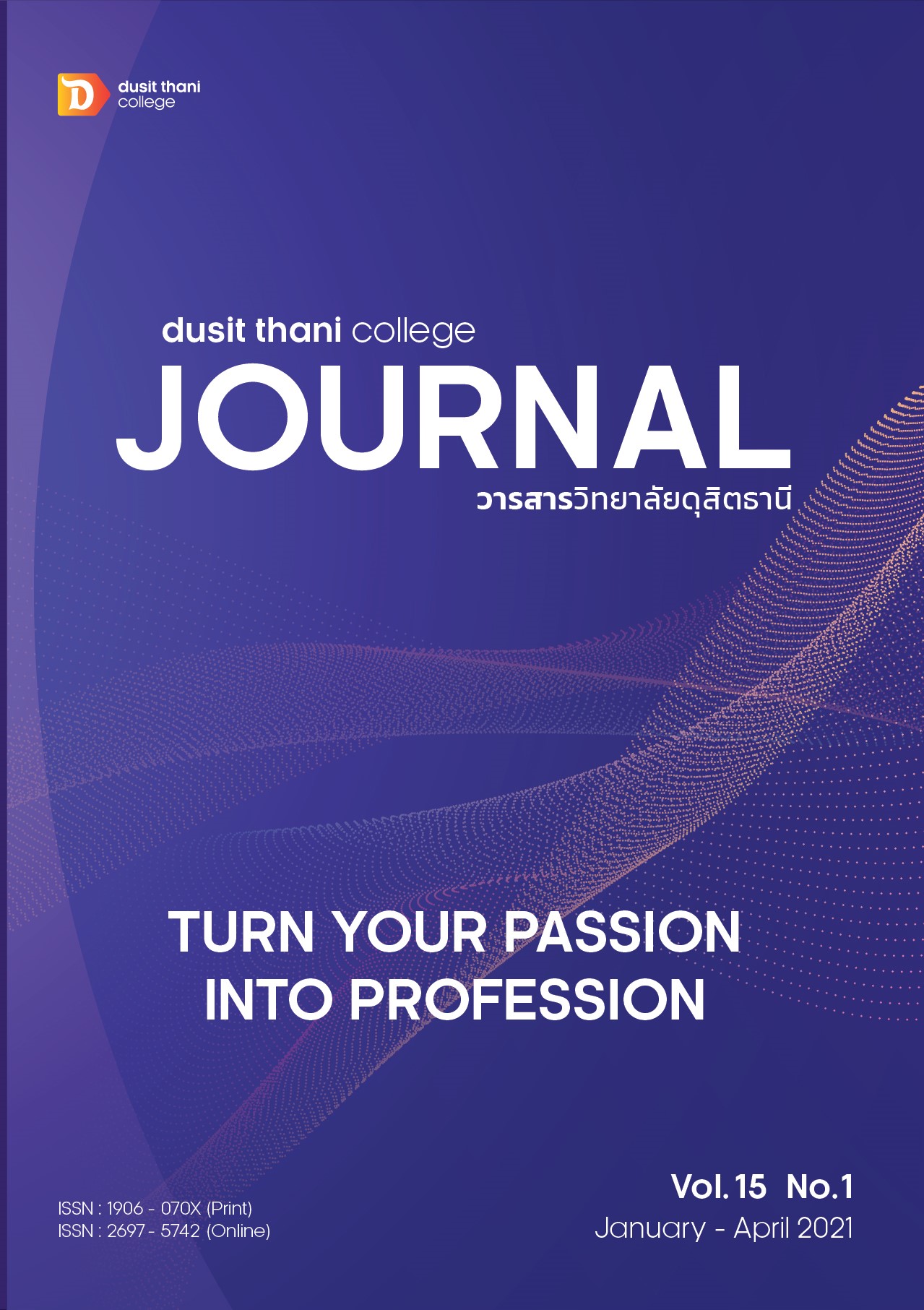GUIDELINE FOR THE DEVELOPMENT OF OTOP AND BRAND PRODUCT TO INTERNATIONAL STANDARDS CHIANG RAI PROVINCE
Main Article Content
Abstract
This research aims to analyze the problem of Chiang Rai OTOP pros=ducts in terms of product development by using research and development process, and to connect the product market with the brands in order to receive the international standard for product development. The samples in this study were 20 products, divided by 5 product groups, consisting of 7 products from food group, 4 products from beverage group, 4 products from clothing group, 4 products from instrument and souvenir group, and 1 product from non-food herbs group. The sample group was obtained though the survey of product potential and entrepreneur's interest using research and development process. A quality method was implemented to find out the research results. This research is conducted by using the methodology of qualitative research which consisted of focus group discussion, rural system analysis, a topic related literature reviews and in-depth interviews, and participation observation. The researchers used the entrepreneur's knowledge development process to understand the creation of products that meet the needs of consumers in the international market, maintain the identity of the origin and develop the standard stipulated in the international market as a knowledge of product development and packaging. Research has shown that entrepreneurs can develop their potential to promote OTOP products and increase distribution channels and offer products to be competitive internationally.
Article Details
Article Screening Policy
- All research and academic articles to be published must be considered and screened by three peer reviews in the relevant field / article.
- All articles, texts, illustrations and tables published in the journal are the personal opinions of the authors. Editors don't always have to agree. And no responsibility whatsoever is the sole responsibility of the author.
- The articles to be published must never be published. Where did you first publish? And not in the consideration of other journals If the audit found that there has been a duplicate publication It is the sole responsibility of the author.
- Any article that the reader sees as being plagiarized or impersonated without reference. Or mislead the work of the author Please let the journal editor know it will be your greatest blessing.
References
product value to hand – made embroidered cloth entrepreneur in RAI Tombon MAEJAN CHIANGRAI. Research report. Faculty of Humanities and Social Sciences Chiang Mai Rajabhat University. 2019.
Chutibud, Monnipa and Chompoolong, Nikom. (1995). Guidelines for the use of services in
teaching and learning management. Bangkok: Aksorncharoentat.
Community Development Department, Ministry of Interior. (2018). Guidebook of OTOP
Inno – Life Tourism - Based Communities project management. 2018.
Community Development Department. (2010). The way and OTOP Product Champion
: OPC 2010. Bangkok: B.T.S. PRESS CO.,LTD.
Humanities and Social Sciences Chiang Mai Rajabhat University. (2019). International
Lanna OTOP of 6 North Provinces OTOP Expo. The Final report. Faculty of Humanities and Social Sciences Chiang Mai Rajabhat University. 2019.
Jearakul, Thanyamai. (2014). The Problems and the Adaptation of OTOP to AEC.
Executive Journal. 34(1) : 177-191.
Jittungwattana, Boonlert. (2014). Tourist behavior. Bangkok ; Dammasarn.2014.
Jukrkorn, Narongsak. (2002). The manual of learning process management for developing efficiency of community products' administration and management. Bangkok. Phranakorn Rajabhat University.
Kanjanakarun, Pairat and Srivichairumpan, Thanet. (2003). Local Way of life information, Local wisdom, Skill and Expertise : Case Study Sesame oil Manufacturer, MAEHONGSON Province. Chiang Mai. Faculty of Economics, Chiang Mai University.
Keawserm, Tiwa. (2008). The Problem and Demand of The Local Product Entrepreneur
Development (OTOP) Phetchabun Province. Research report. Phetchabun Rajabhat University.
Mccathy & Pereault, Jr. (1991). Basic Marketing. New York : Mc Graw-Hill.
Moonsri, Krittiya. (2013). The Create of added value to OTOP product with Creative
thinking for Marketing Proactive. Phetchabun Rajabhat University. National Research Council of Thailand.
Nuansara, Manote and Teams. (2019). The Development of Product and Entrepreneur
5 star OTOP (Product Differentiation) Develop to International standard and Branding. Research report. Faculty of Humanities and Social Sciences Chiang Mai Rajabhat University. 2019.
Pengsiri, Jaruwan and teams. (2019). The creative of Waste Materials Woven fabric to
Improve Innovation with international Art. Research report. Faculty of Humanities and Social Sciences Chiang Mai Rajabhat University. 2019.
Punwan, Idsaragon and teams. (2019). A study of Wooden flute manufacturing process for Product development and Branding to International standard: Case Study Golden wood flute DONGMADA, Tombom MAELAO CHIANGRAI. Research report. Faculty of Humanities and Social Sciences Chiang Mai Rajabhat University. 2019.
Saennompon, Ngamnid, Tiranarat, Krittipong and Honganurak, Vilawan. (2019). The
Research Project of way to develop 5 stars OTOP to Sustainable Tourism in
Chiang Rai. Research report. Faculty of Humanities and Social Sciences Chiang Mai Rajabhat University. 2019.
Saereerat, Siriwan, Ruksitanon, Prin and Saereerat, Suporn. (2003). The new age of
Marketing Administration. Bangkok: DKToday.
Sukaroj, Pattanin. (2019). The way to develop Cultural Communication of product
and OTOP Entrepreneur : Case Study 5 star OTOP in Chiang Rai. Research report. Faculty of Humanities and Social Sciences Chiang Mai Rajabhat University. 2019.


